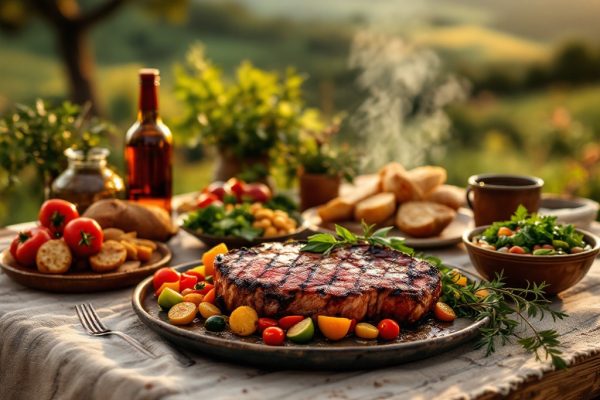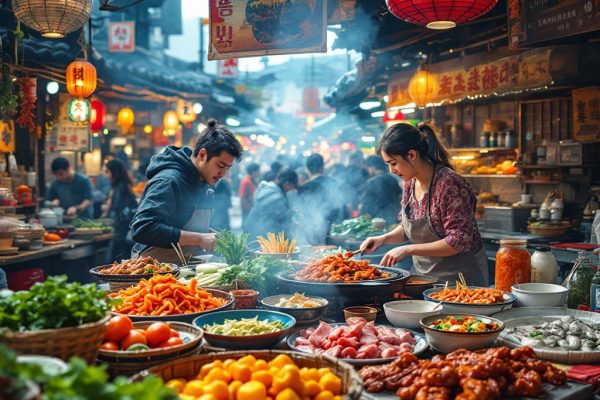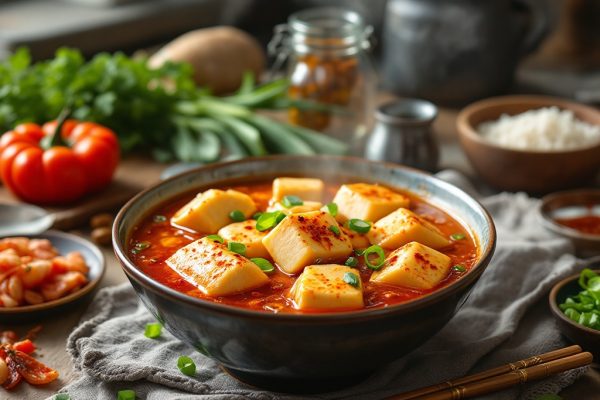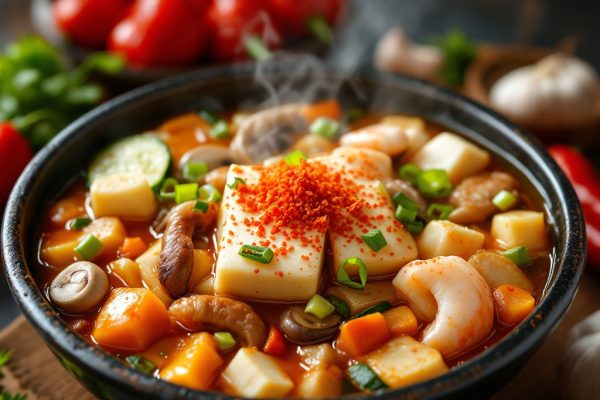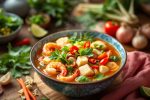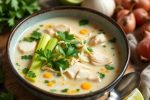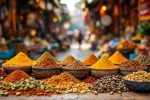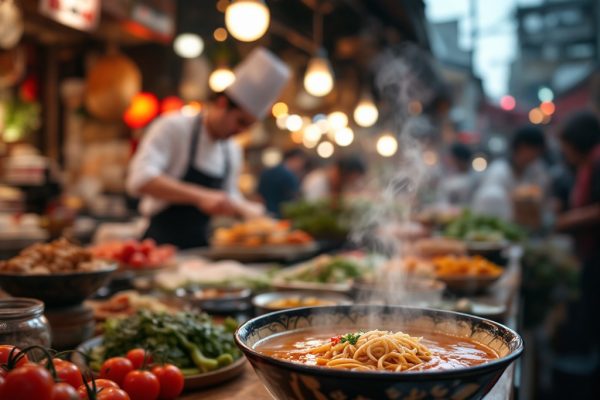Colorful and Vibrant Cuisine of Bolivia Must-try Dishes
Embark on a culinary adventure through Bolivia, where indigenous ingredients like quinoa and potatoes meet Spanish flavors in a vibrant fusion. From the savory anticucho of the Andes to the hearty silpancho of Cochabamba, discover a diverse range of dishes shaped by the country’s varied landscape. Explore traditional stews, spicy sensations, and sweet treats like alfajores. Dive into this article to uncover the rich culinary heritage of Bolivia and find your next must-try dish!
Important information
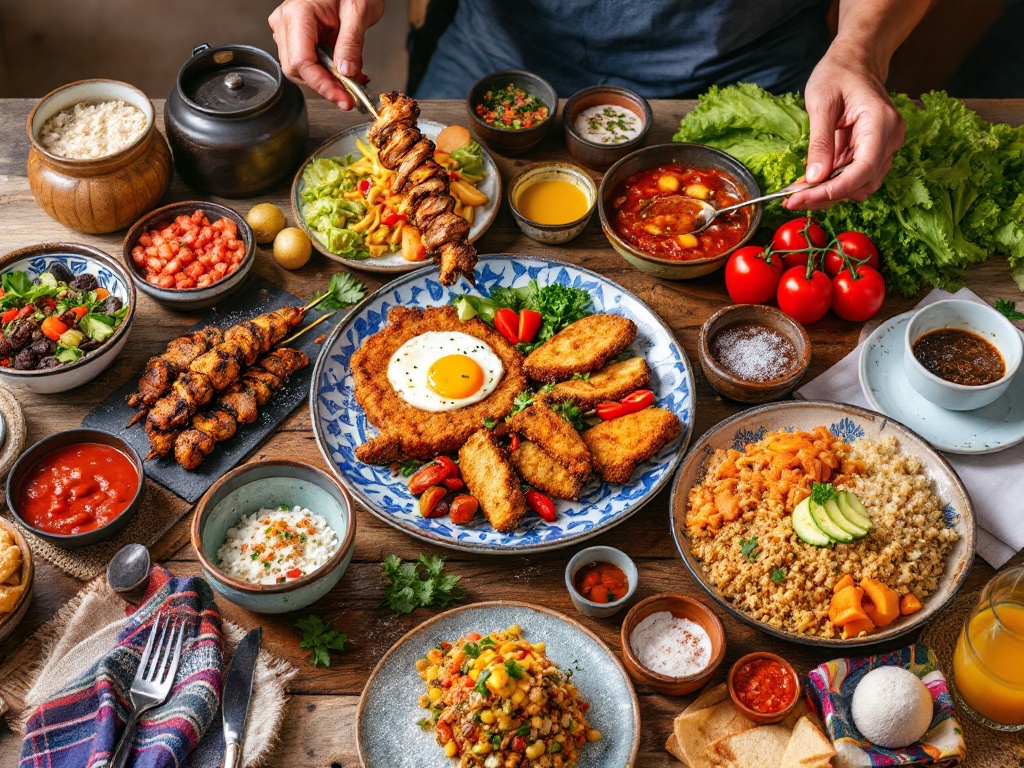
- Bolivian cuisine is a fusion of indigenous ingredients (potatoes, quinoa, corn) and Spanish influences (beef, pork, wheat).
- Regional variations exist: the Andes features llama meat and potatoes, while the Amazon offers tropical fruits and fish.
- Popular dishes include Salteñas (savory pastries), Anticucho (grilled beef heart), and Silpancho (breaded beef cutlet with rice, potatoes, and egg).
- Traditional drinks include Mocochinchi (made from dried peaches) and Api (a warm purple corn beverage).
- Key flavors include aji (chili pepper), spices introduced by the Spanish, and unique ingredients like chuño (freeze-dried potatoes).
Introduction to the Colorful and Vibrant Cuisine of Bolivia
Bolivian food is an exciting blend of indigenous ingredients and Spanish influences, creating a delicious fusion of flavors and textures. Traditional dishes often showcase local staples like potatoes, quinoa, and corn, seasoned with a mix of spices and herbs for aromatic and flavorful meals. Reflecting Bolivia’s diverse geography, each region offers its own unique twist on classic dishes.
Indigenous Influences and Mestizo Cuisine
Bolivian cuisine offers a vibrant fusion of indigenous ingredients and Spanish culinary traditions. Staples like potatoes, quinoa, and corn, cultivated long before Columbus’s arrival, remain central to Bolivian cooking. The Spanish introduced ingredients such as beef, pork, wheat, and rice, resulting in a distinctive “mestizo” cuisine. This blend is evident in dishes like salteñas, savory pastries filled with meat and vegetables, showcasing the harmonious marriage of local produce and European techniques. Many Bolivian dishes also emphasize the unique flavors of the Andes region.
The Role of Indigenous Ingredients
Bolivian cuisine showcases native ingredients like potatoes, quinoa, and corn, which are Andean staples cultivated for centuries and central to many traditional dishes. Other local ingredients also contribute distinct flavors.
Culinary Fusion with Spanish Flavors
Bolivian cuisine offers a delicious fusion of indigenous and Spanish influences. Savor the rich flavors of Salteñas, baked pastries brimming with spiced meat or vegetables, a testament to the marriage of European baking and local ingredients. The Spanish also introduced staples like beef, pork, and wheat, now integral to many Bolivian dishes, creating a truly unique culinary adventure.
Regional Ingredients and Exotic Flavors
Bolivian cuisine offers a diverse culinary experience, reflecting the country’s varied landscape. In the Andean highlands, the diet centers around staples like potatoes, quinoa, and llama meat. The Amazon rainforest presents a contrasting culinary scene, abundant with tropical fruits, fish, and yuca. Traveling down into the valleys reveals a mix of familiar grains and vegetables alongside exotic fruits such as chirimoya.
Unique Ingredients from the Andes
Bolivian cuisine offers unique flavors originating from the Andes Mountains. Potatoes, including the freeze-dried chuño, are a staple in numerous varieties. Quinoa and corn are also prominent ingredients. Llama meat adds a distinctly Andean touch, while aji, a chili pepper, provides a spicy kick.
Amazonian Produce and Spices
- Açaí berries, a staple food, are rich in antioxidants.
- Brazil nuts are a good source of key nutrients, especially selenium.
- Spices like turmeric and ginger enhance flavor and offer various health benefits.
- Plantains and cassava are common starches.
- Tropical fruits such as mangoes and papayas are plentiful.
Must-try Traditional Dishes of Bolivia
Anticucho, a flavorful taste of the Andes, offers grilled and marinated beef heart accompanied by potatoes and a spicy sauce.
Silpancho, a hearty Cochabamba specialty, presents a breaded and fried beef cutlet atop a bed of rice and potatoes, crowned with a fried egg and a refreshing tomato and onion salad.
Pique a lo Macho delivers a spicy kick with its mix of diced beef, sausages, French fries, chopped onions and tomatoes, locoto peppers, and boiled eggs.
Fricasé, a comforting and flavorful stew, blends meat (typically pork or chicken) with a creamy, spicy peanut sauce, often incorporating potatoes, chuño (freeze-dried potatoes), and mote (boiled corn).
Chairo is a thick and satisfying Andean soup featuring beef or lamb, potatoes, chuño, various vegetables, and wheat or barley.
Humintas are versatile corn cakes, steamed or baked, and enjoyed either sweet or savory, often filled with cheese or meat.
Sopa de Maní, a popular peanut soup, combines beef, potatoes, vegetables, and spices in a rich and creamy broth.
Anticucho: A Taste of the Andes
Anticucho, a popular Bolivian street food, features grilled beef heart on skewers. Imagine succulent, flavorful meat cooked over an open flame. Originating in the 16th-century Andes, this dish boasts a rich history yet remains a beloved treat. Served with potatoes and a spicy sauce, anticucho offers a truly satisfying meal. The sauce provides a fiery kick, balanced by the comforting starchiness of the potatoes and the unique, savory flavor of the grilled beef heart. Any food adventurer should definitely give anticucho a try.
Silpancho: A Hearty Meal from Cochabamba
Silpancho, a culinary delight from Cochabamba, Bolivia, offers a satisfying and hearty experience. This Bolivian classic begins with a base of rice and potatoes. A crispy, thin, breaded beef cutlet, fried to a golden brown, rests upon this foundation. A perfectly fried egg is then placed on top of the beef, adding a rich element to the dish. Finally, a refreshing tomato and onion salad is added, providing a bright contrast to the savory flavors.
Pique a lo Macho: A Spicy Sensation
Pique a lo macho is a flavorful Bolivian dish featuring sliced beef, chorizo, frankfurters, and crispy French fries. A vibrant, spicy sauce made with chopped tomatoes, onions, and fiery locoto peppers (similar to habaneros) tops the dish. For an extra kick, llajwa, a Bolivian hot sauce, is added. Boiled eggs and mustard complete this hearty meal.
Fricasé: Comforting Stew with Rich Flavors
Fricasé, a hearty Bolivian stew, combines tender pork with potatoes and chuño (a freeze-dried potato) for a unique texture. Spices enrich the flavor, creating a thick, savory sauce that coats every ingredient. This popular, comforting dish is a Bolivian tradition, perfect for any occasion.
Chairo Soup: A Hearty Traditional Dish
Chairo is a hearty Bolivian soup featuring lamb, potatoes, carrots, and chuño (a unique dehydrated potato product).
Humintas: Corn Delights
Humintas, a Bolivian delicacy, are made from ground corn mixed with cheese and spices. This savory mixture is then wrapped in corn husks and steamed or boiled until cooked through.
Sopa de Maní: The Beloved Peanut Soup
Sopa de Maní is a classic Bolivian peanut soup. This flavorful dish features potatoes, often beef or chicken, and a variety of vegetables that create a rich and hearty meal. It is truly delicious and satisfying.
Savory Street Foods and Snacks
Salteñas are savory pastries brimming with a rich, stew-like filling of meat, vegetables, and a sweet and spicy sauce, often enjoyed for breakfast or a quick bite.
Api con pastel is another popular Bolivian breakfast. Hot, purple api, made from ground corn, accompanies a deep-fried pastel filled with cheese or meat.
Cuñapé is a small, baked cheese bread with a chewy, salty texture, perfect with coffee or tea, particularly in Eastern Bolivia.
For lunch, the chola sandwich reigns supreme, featuring roasted pork, pickled vegetables, and llajwa (a Bolivian hot sauce), all served on a crusty roll.
Salteñas: A Juicy Street Food Experience
Salteñas are savory pastries filled with a rich stew of meat (beef, chicken, or pork), potatoes, vegetables, and spices. Their unique sweet and slightly spicy sauce elevates the savory filling. Salteñas are a beloved Bolivian street food and a popular mid-morning snack.
Cuñapé: Eastern Bolivia’s Cheese Bread
Cuñapé, a cherished cheese bread, is incredibly popular in Eastern Bolivia, particularly in Santa Cruz and the northeastern region.
Api con Pastel: Perfect Breakfast Pair
Bolivians often start their day with api, a warm, spiced, and sweet purple corn beverage, paired with a savory pastel, a type of fried pastry.
Chola Sandwich: A Bolivian Lunchtime Favorite
Bolivians enjoy the popular Chola sandwich for lunch. This simple meal combines pork and vegetables.
Sweet Dishes and Traditional Desserts
Alfajores are a cherished South American confection, sandwich cookies filled with rich dulce de leche. They are often dusted with powdered sugar or finished with a delicate icing.
Alfajores: Must-Try Cookies
Bolivians adore alfajores, sandwich cookies filled with rich dulce de leche and finished with a dusting of powdered sugar.
Refreshing Bolivian Drinks
Mocochinchi, a beloved Bolivian beverage, is crafted from dried peaches, giving it a refreshingly sweet character. The process begins by rehydrating the dried peaches. Then, the peaches are simmered with cinnamon and cloves. A touch of sugar enhances the sweetness. Finally, the mocochinchi is chilled and served.
Mocochinchi: A Peachy Refreshment
Mocochinchi is a traditional Bolivian beverage made with dried peaches. Perfect for hot weather, the peaches are rehydrated by soaking them in water, creating a refreshing drink. The addition of cinnamon and cloves creates a deliciously warm, spiced flavor. Chilled and served cold, it is a popular way to beat the heat in Bolivia.




